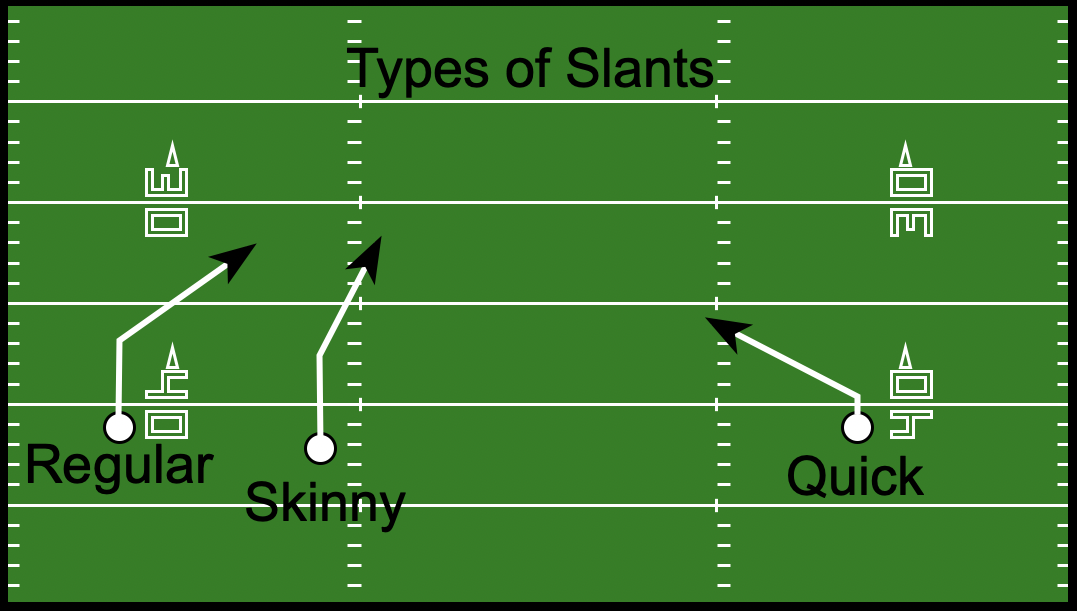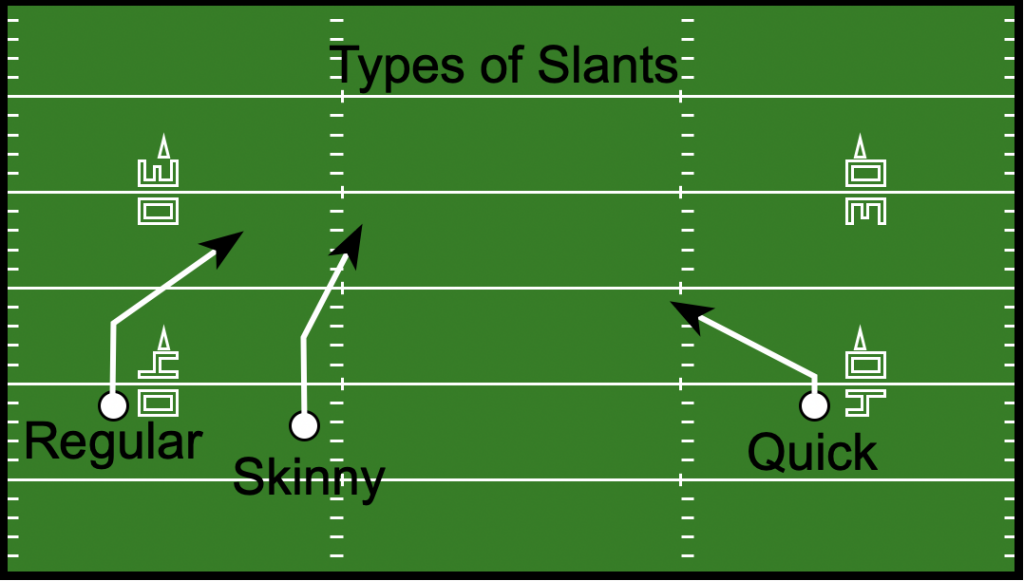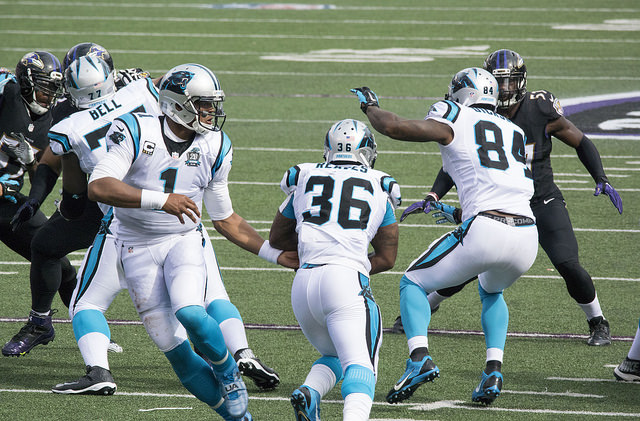The slant route is a popular play in football. It’s often used by offenses to get the ball out quickly, and it can be an effective way to attack all types of defensive coverages. In this blog post, we will take a deep dive into all aspects of slant routes: what they are, how you run them, when it is best to use them, what types of slants exist, and more! Read on for some tips that will help improve your slant route game today.
What is a slant route?
A slant route in football is a running or passing play where the receiver slants across the field and gets open for a short pass. The route is part of your quick game which means that the throw should come out in 1.8s or faster.
If you run the R4 system, the slant route falls in the RUSH category. That means that it can come out at any time in full-field routes, though most likely it is a quick throw.
The receiver, always starting with the outside foot back, will take three steps forward and then on the third step, plant with his outside foot and break inside toward the middle of the field at a 45 degree angle.
After the break, they should look inside toward the Quarterback to attack the throw and make the catch inside the window that the ball is thrown.
[picture]
What are the best techniques to use when running a slant route?
Hard Coverage:
The techniques you need to use vary based on the type of slant route you are running and the defensive coverage you are running it against.
Anytime you get an inside leverage press man coverage, after releasing to the outside, you will need to take two hard steps to cut back inside under the route.
These steps will either be your 2nd and 3rd for a quick hard slant or your 4th and 5th if you have more time in your route (possibly if it is paired with an RPO concept).
You will also need to aggressively use hand combat techniques to keep the defenders hands off your body and to allow you to cut back across their face.
Soft Coverage:
When they get soft coverage, making their cut is simple, but what you must emphasize to your receivers is making everything in your first three routes look like it is not going to be a slant.
That means they should push out hard and get as close to the defender as they can in their first three.
The receiver should stem directly toward the middle of the defender. If they stem inside or outside of the defender, then they are giving them either a better angle or less space for them to close the gap and make a play on the ball.
When that third foot plants, they must turn aggressively into the slant. That is the moment that the defender will react so it’s important to make it abrupt.
When should you run a slant route?
A slant route is a good choice when the defender is in man-to-man coverage and is trying to force you outside.
By taking three hard steps forward, you will make the defender react backward which will give you room to cut back inside across the direction they are facing.
This will make it very difficult for them to react quickly and flip their hips all the way around and will give you more route separation to catch the ball.
If your receiver is running man Cover 0 defense, they should run slants all day long because it’s one of the most difficult routes for linebackers and safeties to defend.
Other types of slant routes
Skinny Slant
A skinny slant is usually run from a slot receiver in a 2 x 2 set. Skinny refers to the angle of the break. Instead of a 45 degree break, it is much less. The goal is to break at just enough of an angle to get past the linebacker defender and then find a deeper window to catch the ball away from the next inside linebacker defender’s drop. Often when linebackers are defending slants they look to take away passing lanes. In this case, wide receivers need to make sure they get position inside them
Quick Slant
A quick slant is used as a blitz or tight man coverage beater and can be run from any position on the field. Instead of pushing vertical first before breaking inside, the receiver instead only take a single step or even releases immediately into the slant angle. When you have to get the ball out fast, this is a great route. Most teams make it an automatic adjustment when they see blitzes coming or tight man coverage. The quarterback can catch and throw immediately. Receivers have to be aggressive to uncover and get separation and good positioning.
Slant vs Cover 2 or Cloud Coverage
One other situation that wide receivers will face is the hard Cover 2 corner. This coverage can look different based on how coaches teach it. If a corner is close and attacking with contact right away, the receiver should push upfield to the inside of the defender and then break off at the right steps. This may take a fake outside first and then a vertical release inside before the break.
If the corner is playing off and not seeking to make early contact, then the receiver should stem them outside as much as they can before breaking inside to help create spacing for the route.
With a slant versus Cover 2, the Corner will be pressing hard over the top but not defending inside. The inside threat is a linebacker looking to take away the slant zone, but this is typically in the 8-10 yard range. To help with this threat, receivers should look to break into the window but not continue to get depth where the linebacker can take it away. One option here is to “shudder” down the route and be slow through the window. Another option is to take the route nearly flat or parallel to the line of scrimmage, allowing the receiver to continue to run away from coverage.
Conclusion
In conclusion, the slant route is a great choice for a passing play if defenders are in man-to-man coverage, off-zone coverage or hard cover 2.
The best types of slants happen against Cornerbacks playing off of them with no contact early on where receivers can stem outside and create more space inside which makes catching easier. If there is physical contact by the cornerback right away, this will require taking steps outside first before cutting inside which may take some practice but is absolutely worth it to get better separation.
The popular saying, “Slant till you can’t” is true when you practice the route against everything.
So go for it and know that it’s never a bad route to run!
Next Steps Podcast
Check out our latest episode on the Slant Route where I dive into releases against different coverages and take a look at some NFL Slant Routes that went for touchdowns.






